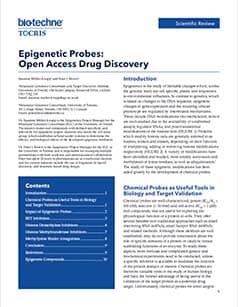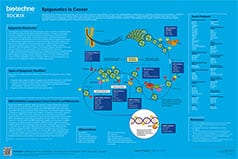G9a/GLP
G9a and GLP (G9a like protein) are histone lysine methyltransferases that methylate H3K9, leading to transcriptional repression. These proteins are required for embryonic development in mice and also have roles in neuronal function and epigenetic modification of gene expression in response to repeated cocaine exposure.
G9a and GLP (G9a like protein) are histone lysine methyltransferases, also known as euchromatic histone-lysine n-methyltransferase 2 (EMHT2) and EMHT1 respectively. They exist in heteromeric complexes in vivo and lead to transcriptional repression through methylation of H3K9.
G9a or GLP knockout mice exhibit severe retardation during embryonic growth and early lethality, showing G9a/GLP H3K9 methylation is required for embryonic development. Upregulation of G9a/GLP expression is found in various human cancers and knockdown of G9a suppresses tumor cell growth in vitro and invasion of cancer cells in nude mice.
H3K9 methylation by G9a/GLP also has a role in neuronal function: postnatal forebrain neuron specific knockout of G9a results in reduced repression of nonadult neuronal genes and defects in cognition and adaptive behaviors. Additionally, G9a expression is reduced following repeated cocaine exposure in mice, regulating changes in gene expression in the nucleus accumbens.
External sources of pharmacological information for G9a/GLP :
Literature for G9a/GLP
Tocris offers the following scientific literature for G9a/GLP to showcase our products. We invite you to request* your copy today!
*Please note that Tocris will only send literature to established scientific business / institute addresses.
Epigenetics Scientific Review
Written by Susanne Müller-Knapp and Peter J. Brown, this review gives an overview of the development of chemical probes for epigenetic targets, as well as the impact of these tool compounds being made available to the scientific community. In addition, their biological effects are also discussed. Epigenetic compounds available from Tocris are listed.
Epigenetics in Cancer Poster
This poster summarizes the main epigenetic targets in cancer. The dysregulation of epigenetic modifications has been shown to result in oncogenesis and cancer progression. Unlike genetic mutations, epigenetic alterations are considered to be reversible and thus make promising therapeutic targets.

